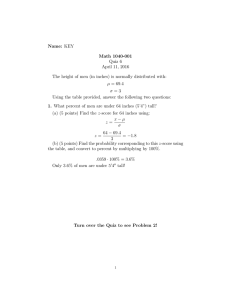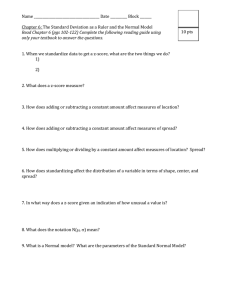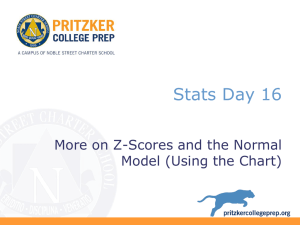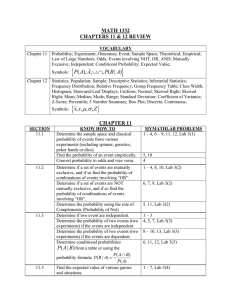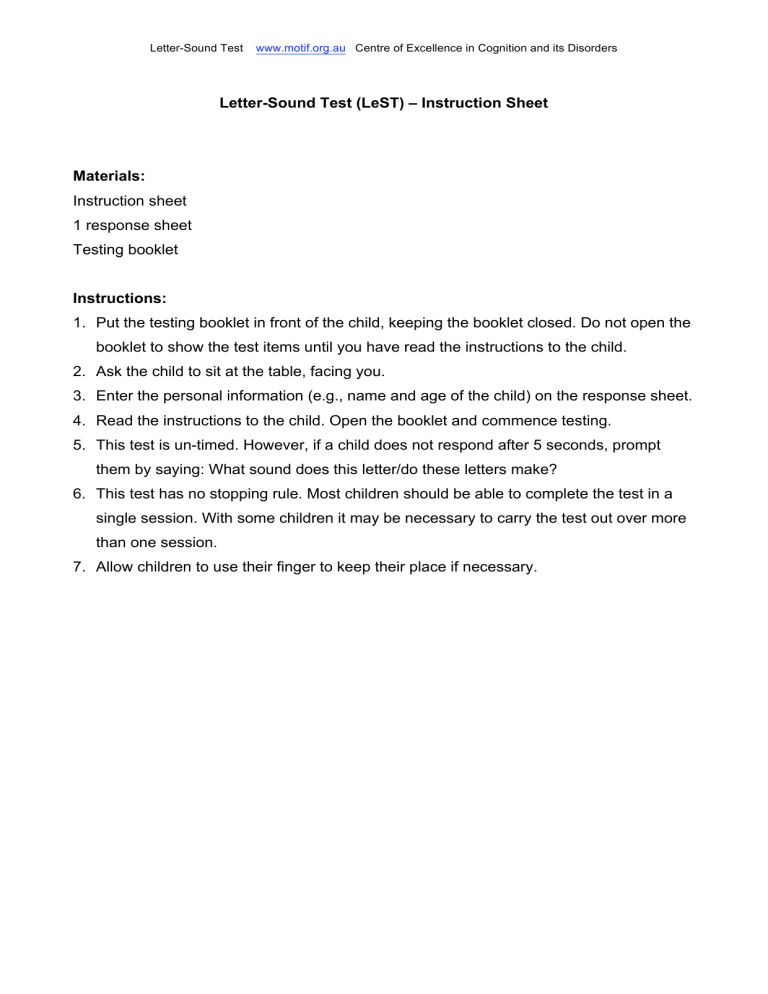
Letter-Sound Test www.motif.org.au Centre of Excellence in Cognition and its Disorders Letter-Sound Test (LeST) – Instruction Sheet Materials: Instruction sheet 1 response sheet Testing booklet Instructions: 1. Put the testing booklet in front of the child, keeping the booklet closed. Do not open the booklet to show the test items until you have read the instructions to the child. 2. Ask the child to sit at the table, facing you. 3. Enter the personal information (e.g., name and age of the child) on the response sheet. 4. Read the instructions to the child. Open the booklet and commence testing. 5. This test is un-timed. However, if a child does not respond after 5 seconds, prompt them by saying: What sound does this letter/do these letters make? 6. This test has no stopping rule. Most children should be able to complete the test in a single session. With some children it may be necessary to carry the test out over more than one session. 7. Allow children to use their finger to keep their place if necessary. Letter-Sound Test www.motif.org.au Centre of Excellence in Cognition and its Disorders How to print the Letter-Sound Test (LeST) 1. Print the Letter-Sound Response Sheet and Norms Table. 2. Print the Testing Booklet including the cover-page using single sided printing (total of 5 pages). 3. If you are testing many children you may like to laminate and/or bind your testing booklet. 4. You will need the instruction sheet, response sheet and the testing booklet to test a child. 5. You will need the norms table and scoring instructions sheet to score the child’s test performance. Letter-Sound Test www.motif.org.au Centre of Excellence in Cognition and its Disorders Letter-Sound Test (LeST) – Response Sheet Child’s name: Data of Birth: Grade: Date of testing: Tester’s name: Comments: Setup: Letter-Sound testing booklet, recording device (optional) Say I am going to show you some letters. What I want you to do is to tell me which sound these letters make. Point to the first letter on the first sheet and say What sound does this letter make? If correct say That is correct. If incorrect say That is not quite right. The letter ‘t’ makes the sound /t/. Remind the child to say the letter sound (not name) if necessary: You said the letter name but I want you to say the letter sound. What sound does this letter make? Provide correct answer if necessary. Proceed with the next item and give feedback (e.g., comment on accuracy of the response, provide correct response) on the next two items if required. Administer all remaining items. Do not provide the correct answer after item 3. If necessary make notes or comments on the child’s response in the space provided. Feedback – only give feedback (including the correct response) on the first 3 items. Response – circle 1 for correct response and 0 for incorrect. Record the child’s response. Prompt: - if child does not respond after 5 seconds. Move on to next item after another 3 seconds. - If a child says the letter name, throughout the test, say: You said the name of the letter. Can you tell me what sound the letter makes? - If a child loses their line – prompt them to use their finger. For items where more than one response is correct write down the child’s response. This test is un-timed and has no stopping rule. No Item Word 1. 2. 3. 4. 5. 6. 7. 8. 9. 10. t n s i l r a d c p toy nose sat in like rat at dog cat pig Response Comment Accuracy 0 0 0 0 0 0 0 0 0 0 1 1 1 1 1 1 1 1 1 1 Letter-Sound Test www.motif.org.au Centre of Excellence in Cognition and its Disorders No Item Word 11. 12. 13. 14. 15. 16. 17. 18. 19. 20. 21. 22. 23. 24. 25. 26. 27. 28. 29. 30. 31. 32. 33. 34. 35. 36. 37. 38. 39. 40. 41. 42. 43. 44. 45. 46. 47. 48. 49. 50. 51. e m o b er g f u v k h j w y ar z th sh ng ch ee x qu oo ph oi ai kn ay oa oy au wr ea gn aw ir wh ou ur igh Response Comment Accuracy end man not boy her girl fox up very kind hot jam with yet are zero thank, think shoe sing child keep fox quit moon, book phone oil rain knife say oat toy auto wrote eat gnu awful sir when out turn high 0 0 0 0 0 0 0 0 0 0 0 0 0 0 0 0 0 0 0 0 0 0 0 0 0 0 0 0 0 0 0 0 0 0 0 0 0 0 0 0 0 Total number correct z-score: Classification (circle): Below Average 1 1 1 1 1 1 1 1 1 1 1 1 1 1 1 1 1 1 1 1 1 1 1 1 1 1 1 1 1 1 1 1 1 1 1 1 1 1 1 1 1 / 51 %-ile: Average Above Average Letter-Sound Test www.motif.org.au Centre of Excellence in Cognition and its Disorders Scoring Instructions Sheet 1. Count the total number of correct items (/51) and enter this score into the space at the bottom of the score sheet. 2. Go to the Norms Table and find the appropriate Year Level for the child (i.e., Kindergarten, Year 1, Year 2, or Year 3). 3. Look up the percentile and z-score corresponding to the child’s total raw score. 4. Circle the child’s classification (i.e., below average, average, above average). Example: If a child is in Year 1 has a total raw score of 37, find the raw score ‘37’ in the table and read across the rows to the columns that display the percentile and z-score for Year 1. What is a z-score? A z-score is a standard score with a mean of 0 and a standard deviation of 1. A z-score of 0 means average performance. A z-score from -1 to +1 is in the average range. A z-score from +1 to +2 is in the above-average range. A z-score above +2 is in the well-above-average range. A z-score from -2 to -1 is in the below-average range. A z-score below -2 is in the well-below-average range. What is a percentile? A percentile score indicates a child’s rank in comparison to other children the same age. A percentile of 90 means that a child’s score is better than 90% of scores of children the same age (i.e., a very good score). A percentile of 10 means that a child’s score is better than 10% of scores of children the same age (i.e., a poor score). A percentile of 50 is average for age. So, a percentile of 50 means that a child’s score is better than 50% of scores of children the same age (i.e., an average score). Letter-Sound Test www.motif.org.au Centre of Excellence in Cognition and its Disorders Norms Table Grade(Year)-based percentile ranks and normalised z-scores

